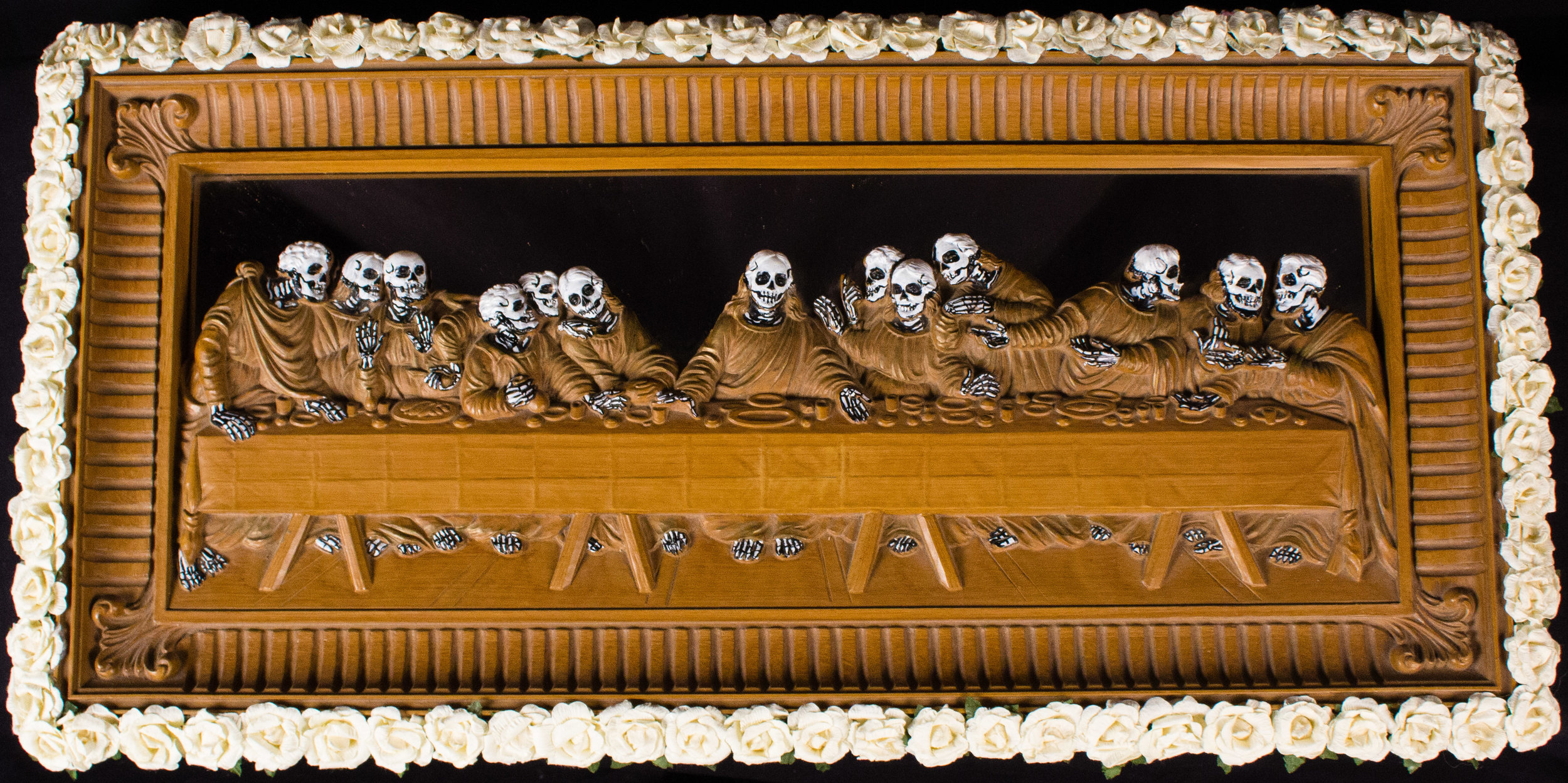Most recently and currently, I’ve been working with found object figurines – people and animals - which I alter by painting/drawing their “respective” skeletons and adding additional elements. I call these found object manipulations, “tchotchkes,” which is a Yiddish term for trinkets. By applying the skeletons, I am equalizing the figures - we all have a skeleton. The skeleton is not only a symbol of death, as some viewers may see the figures as scary or that the work is implying that whatever figure is “dead,” in the metaphorical sense. While the layers of meaning and significance is definitely part of the work, the skeleton also merely serves as a reminder of the temporality of the physical form. In some cases, the skeleton will rid the found object image of its original, sometimes, stereotypical appearance. This is most important to the concept that, as humans, we make things/people sacred or beloved or place a “value” on them based on what we see on the surface and based on what we have been taught. Underneath it all, we (humans) are all essentially the same, the physical body will deteriorate, but it is our spirit (soul, belief, memory) that will live on. The concept of Dia de los Muertos is most influential in this series of work. The original object I altered was my grandma Gonzalez’s Last Supper, a mirrored relief that resided in grandma’s dining room. The sentiment attached to that object was a fitting connection to Dia de los Muertos and honoring the memory of my grandmother.
Since then, finding objects that someone once cared for and then discarded or left behind, for whatever reason, has become the objective. The use of found objects is an important aspect to the work, as I see their use as a form of environmental conservation – saving something from the landfill and reconfiguring what already exists and still creating something new without producing another “thing” to take up space. As the work evolves, the mixing and overlapping of cultures, religious symbolism and secular imagery becomes more prominent and becomes another means by which we are all connected and how our stories overlap. By using found objects, I hope to emphasize the importance of taking things that have been discarded or overlooked and “re” create something new, therefore giving that object/image renewed value, elevating it, even making it sacred, in essence, giving it a new “after” life.
